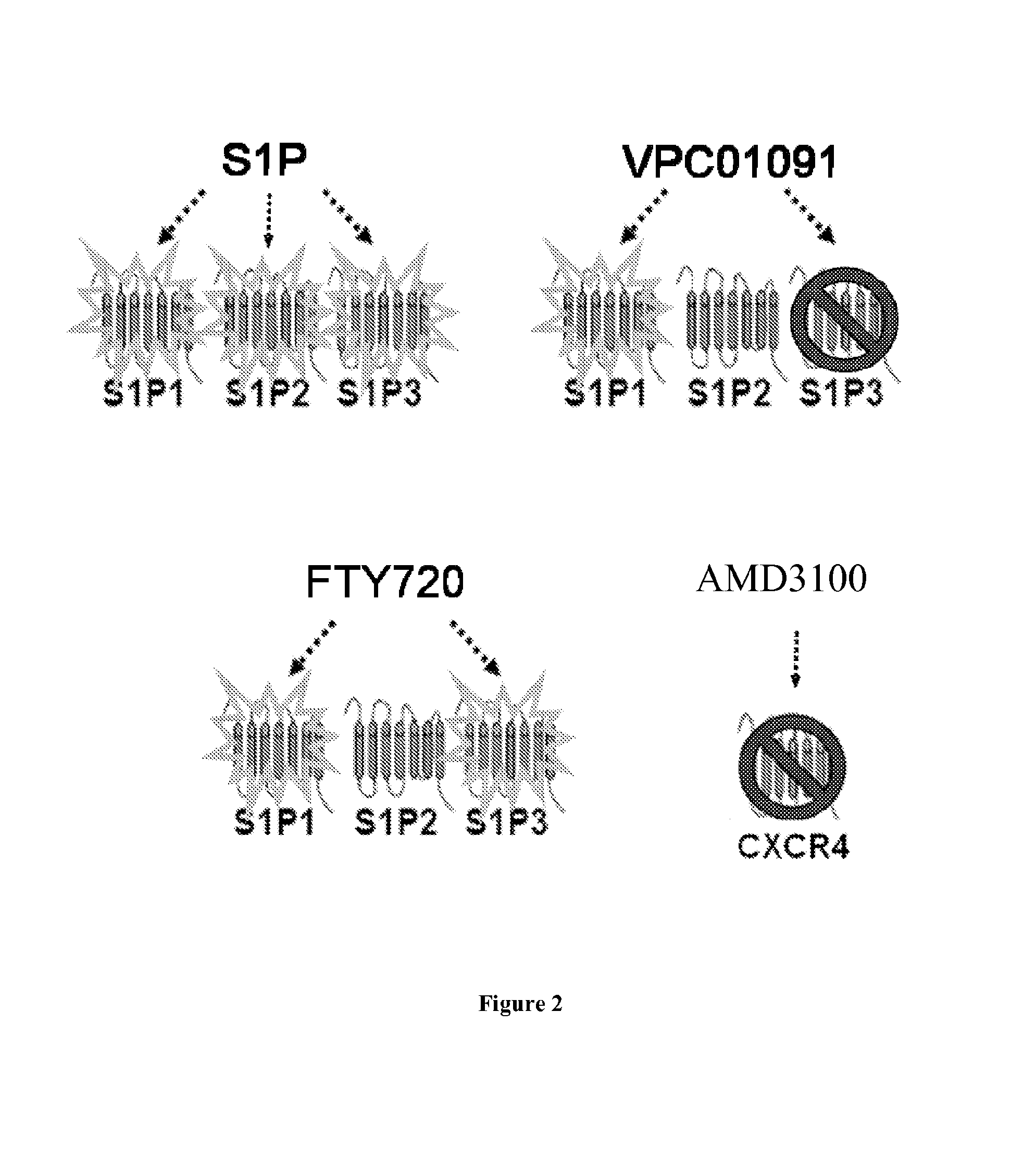Compositions and methods for tissue engineering and cell based therapies
a cell-based therapy and tissue engineering technology, applied in the direction of biocide, drug composition, active ingredients of phosphorous compound, etc., can solve the problems of tissue ischcmia and failure, osseous tissue ingrowth and the proportion of mature smooth muscle cell-invested microvessels, and the occurrence of vasculogenesis in mature organisms remains an unsettled issue, etc., to enhance bone healing, enhance bone healing, and improve the structural integrity of the bone all
- Summary
- Abstract
- Description
- Claims
- Application Information
AI Technical Summary
Benefits of technology
Problems solved by technology
Method used
Image
Examples
embodiments
[0279]In one embodiment, the present invention encompasses the use of plerixafor, alone or in combination with other agents. Plerixafor (AMD3100; Mozobil, Genzyme) is a small-molecule CXCR4 chemokine antagonist known to enhance mobilization of stem cells for autologous transplantation in patients with non-Hodgkin's lymphoma (NHL) and multiple myeloma (MM). It is also used in some cases in conjunction with G-CSF administration, but must be administered at least several days later. Plerixafor (AMD3100) is an inhibitor of the interaction between stromal cell-derived factor 1 (SDF-1) and its receptor CXCR4.
[0280]Plerixafor (chemical name-1,1′-[1,4-phenylenebis(methylene)]bis-1,4,8,11-tetraazacyclotetradecane octahydrochloride) is a macrocyclic compound and a bicyclam derivative and has the following structure:
[0281]It is a strong base; all eight nitrogen atoms accept protons readily. The two macrocyclic rings form chelate complexes with bivalent metal ions, especially zinc, copper and n...
example 1
Methods
[0454]Murine Dorsal Skinfold Window Chamber
[0455]1 mm poly(lactic-co-glycolic acid) PLAGA films loaded with S1P receptor compounds are placed within the window chamber as shown. Repeated measurements of the same vessel networks are recorded and quantified over a 7-day time course using intravital microscopy. (FIG. 3).
[0456]BMC Mobilization & Colony Forming Unit Assay
[0457]Pharmacological compounds (5 mg / kg) were used to mobilize cells from the bone marrow in wild type and S1P3− / − mice. Peripheral blood was harvested and plated on Methocult stem cell clonogenic media for CFU assays after 6 days.
[0458]Models with CX3CR1-eGFP Mice
[0459]Backpacks were implanted with PLAGA films and collagenase was used to digest dorsal tissue directly around the implants after 3 days to create single cell suspensions. Flow cytometry was used to assess cellular content. A feeder artery to the spinotrapezius muscle was ligated, creating an ischemic environment, and confocal microscopy on whole-moun...
example 2
Sphingosine-1-Phosphate (S1P) Receptors Modulate Endogenous Stem Cell Mobilization and Homing for Bone Regeneration
[0481]It is already known that coating allografts with FTY720, an S1P3 agonist, increases the rate of critical size defect healing by enhancing homing of host-derived CXCR4+ stem / progenitor cells such as mesenchymal stem cells (MSCs). These experiments demonstrate that pharmacological inhibition of S1P3 using VPC01091 significantly increases mobilization of BMSCs into peripheral blood resulting in accelerated bone repair in rat cranial defects. Additionally, MSCs pre-treated with FTY720 exhibit increased migration towards SDF-1, a CXCR4+ ligand and critical component of the bone marrow niche. These findings advocate the significant role of S1P3 in stem cell chemotaxis. Additionally, treating animals with both FTY720 coated allografts locally and VPC01091 systematically is beneficial if controlled temporally. Without wishing to be bound by any particular theory, it is pr...
PUM
| Property | Measurement | Unit |
|---|---|---|
| Flow Rate | aaaaa | aaaaa |
| pH | aaaaa | aaaaa |
| melting point | aaaaa | aaaaa |
Abstract
Description
Claims
Application Information
 Login to View More
Login to View More - R&D
- Intellectual Property
- Life Sciences
- Materials
- Tech Scout
- Unparalleled Data Quality
- Higher Quality Content
- 60% Fewer Hallucinations
Browse by: Latest US Patents, China's latest patents, Technical Efficacy Thesaurus, Application Domain, Technology Topic, Popular Technical Reports.
© 2025 PatSnap. All rights reserved.Legal|Privacy policy|Modern Slavery Act Transparency Statement|Sitemap|About US| Contact US: help@patsnap.com



